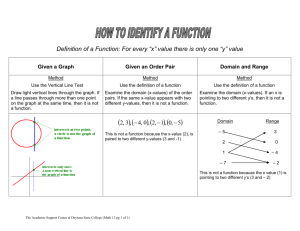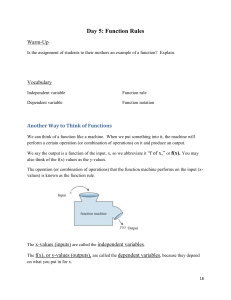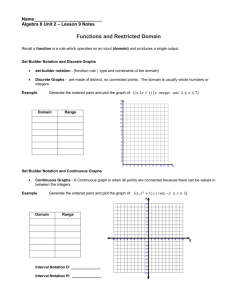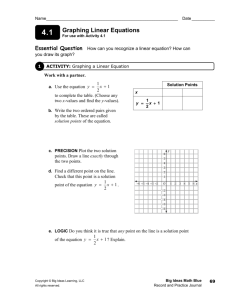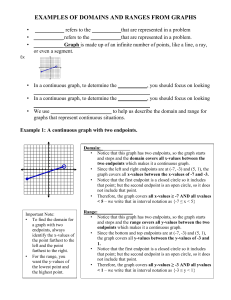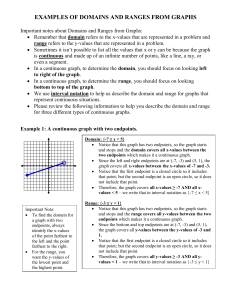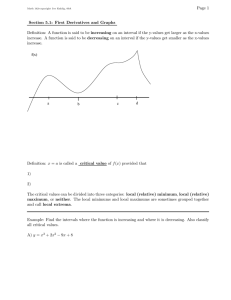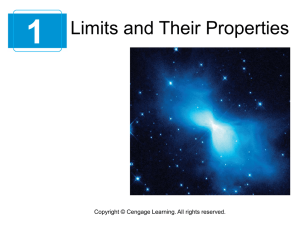1.5 Domain and Range
advertisement
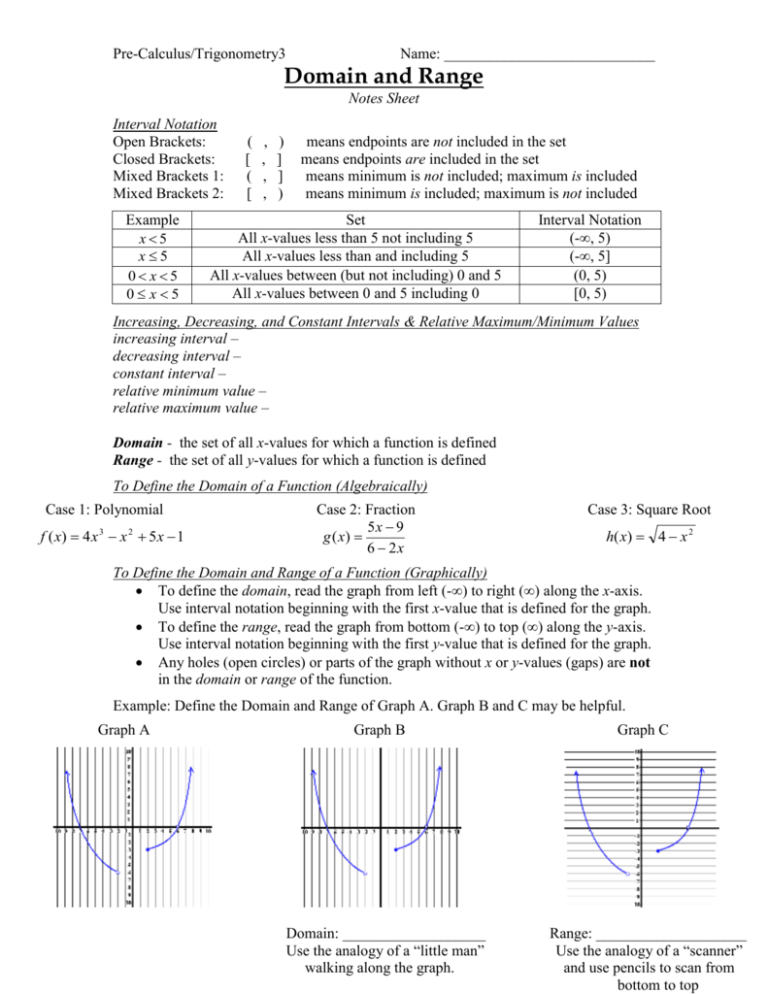
Pre-Calculus/Trigonometry3 Name: ____________________________ Domain and Range Notes Sheet Interval Notation Open Brackets: Closed Brackets: Mixed Brackets 1: Mixed Brackets 2: Example x5 x5 0 x5 0 x5 ( [ ( [ , , , , ) ] ] ) means endpoints are not included in the set means endpoints are included in the set means minimum is not included; maximum is included means minimum is included; maximum is not included Set All x-values less than 5 not including 5 All x-values less than and including 5 All x-values between (but not including) 0 and 5 All x-values between 0 and 5 including 0 Interval Notation (-∞, 5) (-∞, 5] (0, 5) [0, 5) Increasing, Decreasing, and Constant Intervals & Relative Maximum/Minimum Values increasing interval – decreasing interval – constant interval – relative minimum value – relative maximum value – Domain - the set of all x-values for which a function is defined Range - the set of all y-values for which a function is defined To Define the Domain of a Function (Algebraically) Case 1: Polynomial f ( x) 4 x 3 x 2 5 x 1 Case 2: Fraction 5x 9 g ( x) 6 2x Case 3: Square Root h( x ) 4 x 2 To Define the Domain and Range of a Function (Graphically) To define the domain, read the graph from left (-∞) to right (∞) along the x-axis. Use interval notation beginning with the first x-value that is defined for the graph. To define the range, read the graph from bottom (-∞) to top (∞) along the y-axis. Use interval notation beginning with the first y-value that is defined for the graph. Any holes (open circles) or parts of the graph without x or y-values (gaps) are not in the domain or range of the function. Example: Define the Domain and Range of Graph A. Graph B and C may be helpful. Graph A Graph B Domain: ___________________ Use the analogy of a “little man” walking along the graph. Graph C Range: ____________________ Use the analogy of a “scanner” and use pencils to scan from bottom to top
